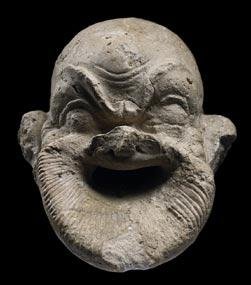Hidden Afghanistan
dal 21/12/2007 al 19/4/2008
Segnalato da
21/12/2007
Hidden Afghanistan
De Nieuwe Kerk, Amsterdam
There is more to Afghanistan than war and destruction. It is a country on which different cultures have left their mark. The exhibition presents 250 archaeological objects, most of which were rediscovered in 2004 in the vaults of the Central Bank in Kabul and brought to Europe in 2006 for restoration and for this traveling show.

In the Winter of 2007 and the Spring of 2008, the Nieuwe Kerk will present a completely different view of Afghanistan, a country that has been in the news almost daily in recent years. There is more to Afghanistan than war and destruction. It is a country on which different cultures have left their mark. Strategically located on the trade routes between East and West, ancient Afghanistan was at the crossroads of civilizations in central Asia, which is evident from the magnificent archaeological finds. The exhibition presents 250 archaeological objects, most of which were ‘rediscovered’ in 2004 in the vaults of the Central Bank in Kabul and brought to Europe in 2006 for restoration and for this traveling exhibition.
Four archaeological sites play a key role. The oldest, Tepe Fullol, dates from the Bactrian Bronze Age (around 2000 BC). In the exhibition it is followed by a larger section dealing with Ai Khanum, a city that was founded by Greeks, on the edge of the steppes, in the wake of Alexander the Great’s campaign of conquest and that bears witness to Hellenism (4th to 2nd centuries BC). The famous gold treasure of Tillya-tepe is renowned: jewelry and other art objects from six graves from the 1st century AD which were excavated in 1979 by a Soviet-Afghan team led by the Russian archaeologist Sarianidi. They form a splendid mix of the art of the steppes, Graeco-Roman iconography, Indian objects and Chinese mirrors. Finally, in Begram, also from the 1st century AD, in 1937 and 1939 two sealed chambers were revealed containing elaborate Indian furniture in ivory, glass, vases and plaster emblemata of Hellenist origin.
The exhibition also tells the story of the National Museum of Kabul. Opened in 1922, it once contained about 100,000 objects which were examined, made accessible and seen by thousands of students and visitors. As well as causing two million deaths, the Russian invasion of Afghanistan in 1979 destroyed the economy and the cultural infrastructure. In 1988, when the situation was deteriorating yet further, the National Museum decided to arrange for the most important collections to ‘go underground’. The treasures in this exhibition were transferred to Central Bank vaults in the presidential palace. Only a few people knew. In the subsequent years they went to great lengths to ensure that no one else discovered the hiding place. After the fall of the Communists in 1992, the country and the museum were subjected to a devastating civil war.
The low point for the National Museum came early in 2001, when the Taliban regime decided that all images should be destroyed. A specially organized group devastated not only the celebrated buddha's of Bamiyan (180 feet and 125 feet high), but also 2500 works of art in the National Museum’s collection. It was not until 2003, after the overthrow of the Taliban regime, that the Afghan government confirmed that the treasures in the palace vault were safe. Registration and restoration began in April 2004. An approach was made to an old friend, the Musée Guimet in Paris. The final outcome was the present exhibition, which was seen at the Musée Guimet in December 2006 and the spring of 2007. From there it traveled to Turin and will now come to Amsterdam.
The exhibition in Europe has been organized by Musée Guimet, Paris, Fondazione per l'Arte della Compagnia di San Paolo, Turin, and the Nieuwe Kerk, Amsterdam. With the help of this exhibition the European partners promote the cultural heritage of Afghanistan. Moreover, the exhibition will make it possible to restore more objects.
De Nieuwe Kerk
Dam Square - Amsterdam



